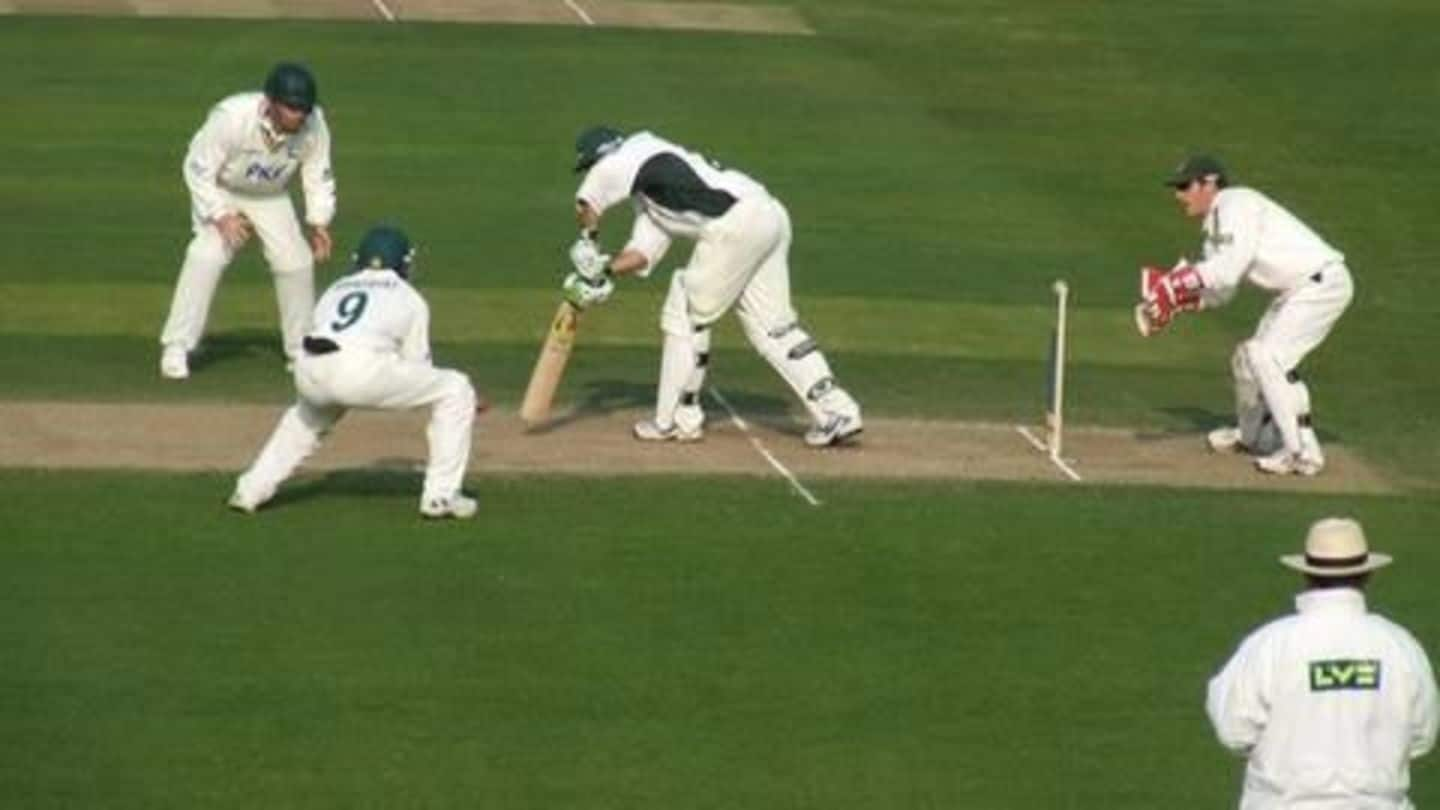
How did the cricketing fielding positions get their names?
What's the story
Cricket is almost followed as a religion in our country, and is one of the most loved sports in the world.
However, even ardent cricket fans don't know the origins of field placement names in cricket.
Let us have a look at how the fielding positions got their rather 'unusual' but logical names.
The basics
'Leg' and 'off' side of the field
The terms 'off-side' and 'leg-side' got their names in the 19th century, when travel was done through carriages.
Off-side was referred to as the side from where rider would mount the carriage, while 'leg-side' was the near side.
Thus, a batsman plays on the off-side when he plays away from his leg, and on the leg-side, if he plays near to the leg.
Information
'Point' or 'point of the bat'
When the 'point' fielding position came into existence it was called 'near the point of the bat.' This suggests that the fielder at point was quite close to the batsman in early days, unlike now, when we see the 'point' at edge of the circle.
Definition
Square leg
A fielder positioned perpendicular to the pitch and on the leg side of the batsman is said to be placed at square-leg. The position got its name with 'square' meaning nearer to the line of crease.
Slips and gully
Fielders close to the batsmen
The 'slip' got its name after the captains started placing a fielder besides the wicket-keeper to take advantage of any 'slip' (or mistake) by the batsman.
'Gully' means a narrow channel and the fielder was placed there to get hold of the ball passing through a 'narrow' gap between the slips and the point position. It eventually became one of the important catching positions.
Information
Cover Position
Traditionally a fielder placed 'to cover the point and middle wicket' was at 'cover' position. However, another explanation behind the origin of this name is that a fielder placed at the cover position is near the place where pitch covers are placed.
The middle fielders
'Mid-on' and 'mid-off'
Initially called the 'middle wicket on' and 'middle wicket off', the 'mid-wicket' fielder was a player positioned between extra cover and the bowler on either sides of the wicket.
'Off' and 'on' were suffixed, on the basis of which side the fielder was positioned.
The 'long-on' and 'long-off' are similar to mid-on and mid-off, only difference being they are placed nearer to the boundary.
Information
Silly point
Silly point is a position in front of the batsman on the off side; and the position got its name as it was 'silly' to stand so close to the batsman.